Removing stretched-in carpet
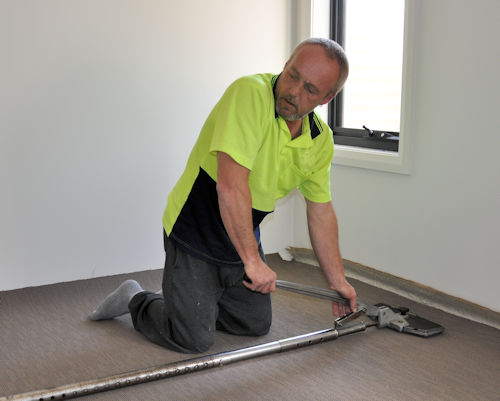 Audio for slide 1 (mp3 |6|KB)
Audio for slide 1 (mp3 |6|KB)
Stretched-in carpet is conventionally-laid carpet that uses gripper strips around the edges and generally has a cushion underlay between the carpet and subfloor.
Sometimes adhesive is used to bond the underlay to the subfloor, but generally this is only around the perimeter of the room.
For full details on how stretched-in carpet is laid and fixed in position, go to the unit: Carpet basics.
Before you start to tear up the old carpet, you should find out whether the owner wants to keep it and use it elsewhere.
If they don't, it's often easiest to cut the carpet into long strips so you can remove smaller sections and roll them up as you go.

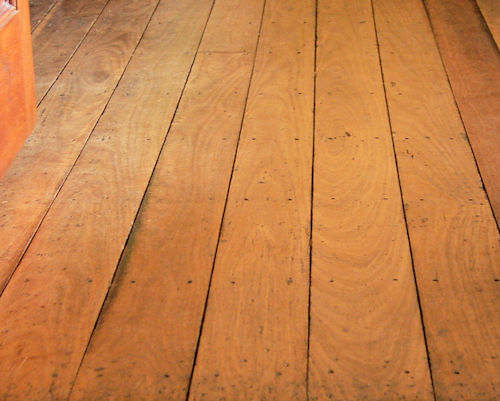 Audio for slide 2 (mp3 |6|KB)
Audio for slide 2 (mp3 |6|KB)
Note that if the substrate underneath is going to become the new floor surface, you'll need to be careful to avoid damaging it when you're cutting the old carpet and levering up the grippers.
Let's go through the steps involved in removing stretched-in carpet, cushion underlay and carpet gripper.
We'll start with the procedure used to open up naplocks (floor trims) without damaging them, because these trims are sometimes kept in position and re-used with the new carpet.

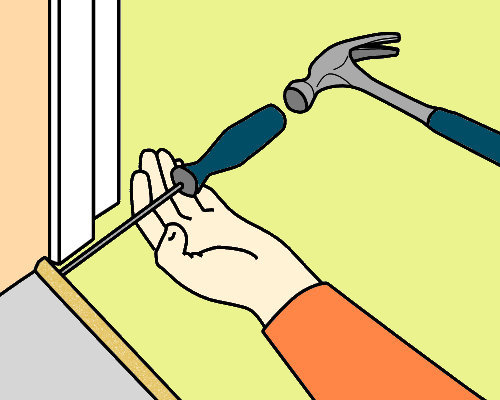 Audio for slide 3 (mp3 |6|KB)
Audio for slide 3 (mp3 |6|KB)
Naplocks
- Insert a flathead screwdriver under the fold of the naplock at one end and gently lift it up.
- Prise the naplock open to about halfway, while pressing down with your thumb on the end that's under the carpet.
- Use the stair tool to finish opening the naplock, and then make any repairs to the pins by bending them back into shape.
If you're removing and disposing of the naplocks, unscrew the fixing screws, or lever up the nails with a pry bar.

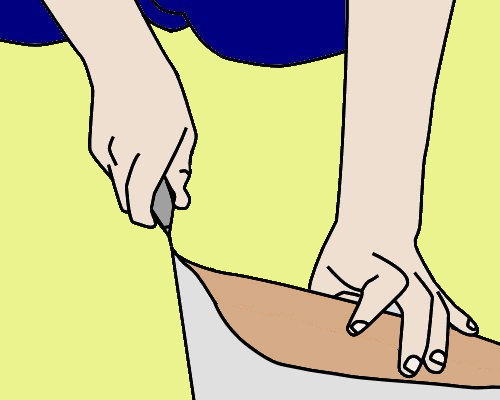 Audio for slide 4 (mp3 |6|KB)
Audio for slide 4 (mp3 |6|KB)
Carpet
- Pull back a section in one corner of the room using a pair of long nosed pliers.
- Continue to pull the carpet back by hand to release it from the gripper strip.
- Cut the carpet into manageable strips, depending on the size of the room.
- Roll up each section of carpet as you pull it up and take it outside.

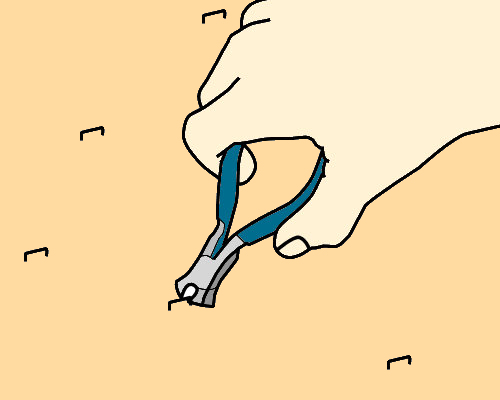 Audio for slide 5 (mp3 |6|KB)
Audio for slide 5 (mp3 |6|KB)
Cushion underlay
- Pull up the underlay and roll it up.
- If there are staples left behind in the wooden subfloor, pull them out using one or more of the following techniques:
- pliers, using a rocking, levering or twisting action
- hand scraper (with the blade reversed to the dull side), using a scraping action
- spade, using the same action as with the hand scraper.

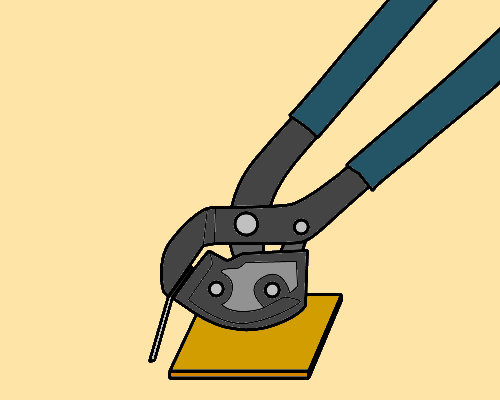 Audio for slide 6 (mp3 |6|KB)
Audio for slide 6 (mp3 |6|KB)
- Note that the technique you use to remove staples or nails from the substrate will depend on the whether it's going to be re-covered or left exposed.
For example, if you're working with a strip timber floor that's going to be sanded and re-finished, you'll need to remove the fixings with the minimum of damage to the timber surface, and be careful not to simply break the tops off them.
- Note that the technique you use to remove staples or nails from the substrate will depend on the whether it's going to be re-covered or left exposed.
- If there is old adhesive under the underlay, remove the glue and any stuck-down underlay with a floor scraper - note that this will not be suitable if the substrate is timber and it needs to be protected.
For heavy-duty adhesive, see the next lesson: Removing adhesive-fixed carpet.

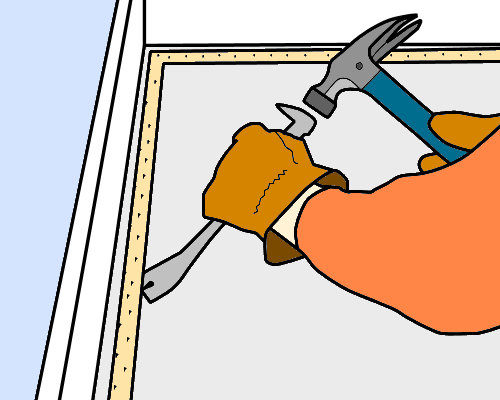 Audio for slide 7 (mp3 |6|KB)
Audio for slide 7 (mp3 |6|KB)
Carpet gripper
- Insert the head of a flat pry bar under the carpet gripper, positioning it near the nail that you wish to pull up, and tap the pry bar in with a hammer.
- Lever up that section of the gripper.
- Work along the gripper and lever up each nail as you go, being careful not to do too much damage to the subfloor surface.
- Put the removed sections of gripper in a safe place while you're working, so that no-one (including yourself!) accidently walks on the sharp pins or nails. It's a good idea to place the discarded grippers in a piece of old underlay so you can wrap them up and take them outside without cutting yourself.


Learning activity
Audio 8 (mp3 |6|KB)Let's say you've been asked to remove stretched-in tufted carpet from a single room. The carpet is laid over a cushion underlay, which has been secured to the timber subfloor with staples. There was no adhesive used in the original installation.
The subfloor comprises Baltic pine (softwood) T&G boards. It will be sanded back and coated with a clear polyurethane finish.
- What tools will you use to remove the carpet, cushion underlay, staples and grippers? List all hand tools you would typically expect to use.
- How will avoid putting indentations in the timber subfloor with your tools when you pull out the staples? Describe the technique you should use.





